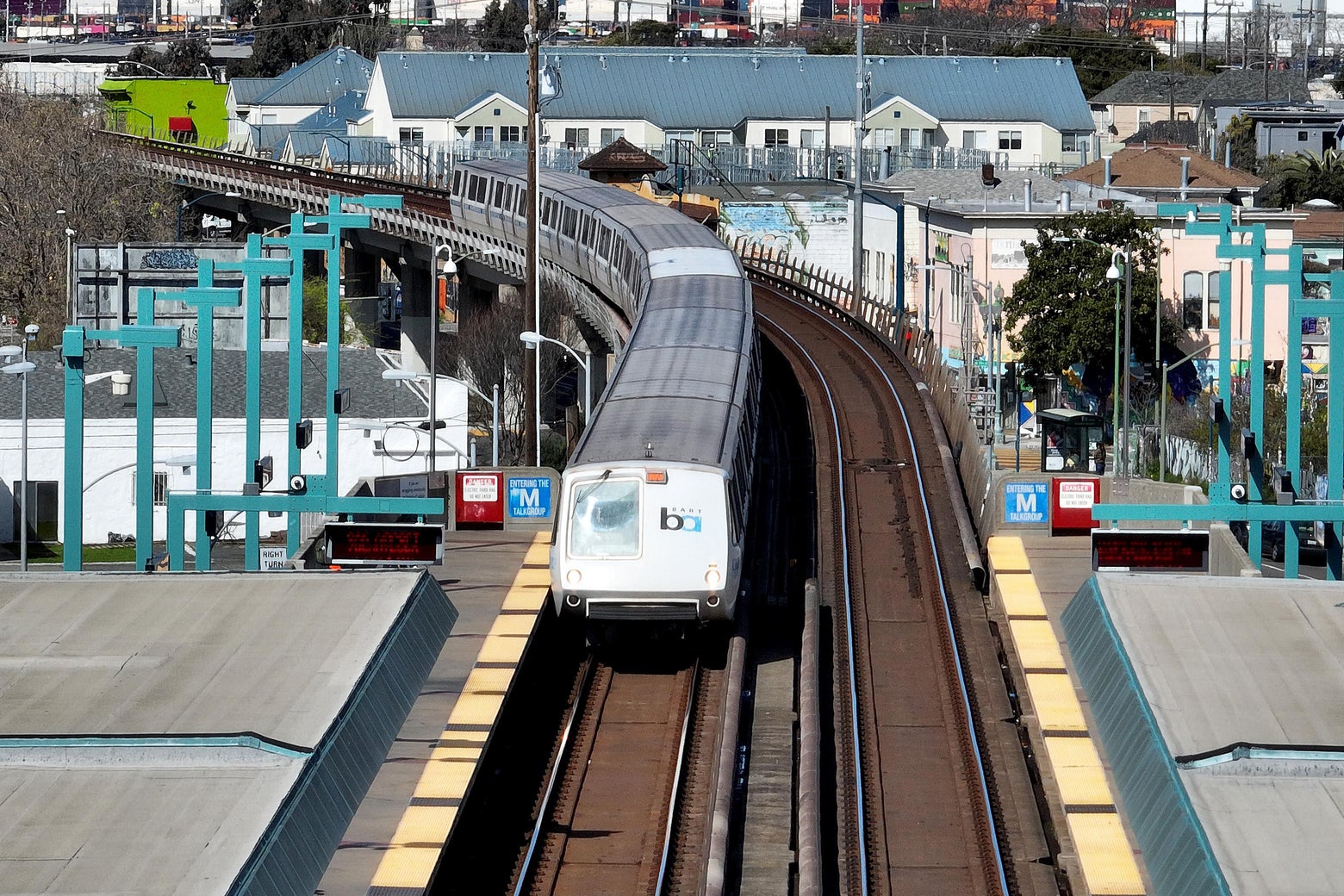Electric commercial flights taking off | American cities "in a bad state" | Challenges of growing global grid capacity

Depressed by the carbon footprint you've generated during all of your post-pandemic revenge air travel?
There's good news: if you live in the Nordics you'll soon be able to fly all-electric short-haul flights on SAS. On June 2, Scandinavian Airlines opened reservations for its first all-electric commercial flights, starting in 2028. The carrier is selling tickets at 1946 kroner each (a nod to SAS's first year of passenger service).
Ultimately SAS hopes to use electric aircraft on all of its short-haul flights between Sweden, Norway, and Denmark (SAS is the national airline of all three countries). For the inaugural electric flights, the carrier will use an ES-30 from the Swedish electric airplane startup Heart Aerospace, which accommodates 30 passengers. Other major carriers - including United Airlines in the US and Air Canada - are investors in Heart's technology, which is focused specifically on electrifying regional routes.
The ES-30 has four electric motors and a proprietary battery technology that gives it a range of about 124 miles, as well as quick 30-minute charging turnarounds between flights. Heart believes that by the mid-2030s it will be able to double that range. Airlines have already placed 230 orders for the ES-30, with options for 100 more.
Electrifying aviation is critical for the world's prospects to reduce carbon emissions because the industry is responsible for 2.5% percent of them globally. But that figure is growing and the industry has knock-on impacts on climate, like getting people to the airport in the first place. And short-haul flights are particularly bad offenders because they emit more carbon per passenger per mile than long-haul flights (i.e. burning a disproportionate amount of fuel at take-off). In the US in particular, solving for this problem could take the spotlight away from America's poor track record at increasing its regional high-speed rail capacity. But at least in the short term you'll still have to keep burning carbon to get to the Nordics to check the ES-30 out. (Electrek)

Amidst the optimism for infrastructure thanks to IIJA, IRA, and the federal government's COVID largesse, a new book argues that America's public sector must confront some equally unsavory financial choices.
Similar to the "urban doom loop" of fleeing white-collar workers reducing a city's tax base, which erodes public services, and causes even more workers to flee in a deteriorating flywheel effect, transit agencies across the country are in a similar boat thanks to remote work. The budget gaps that the public sector is facing over the rest of the decade are massive. What can be done to plug them?
Slate frames the question as follows: when governments are broke, how do you figure out who should get paid? "It’s a fight between the past (pensioners), the present (public services), and the future (bondholders)." In a Bad State: Responding to State and Local Budget Crises, by Yale Law School professor David Schleicher, posits that post-pandemic American cities, states, and transit agencies are finding themselves facing not just a dilemma when it comes to making those choices but a "trilemma:"
In a state or local fiscal crisis, there are three bad outcomes: moral hazard, austerity-induced macroeconomic crisis, and reduced future investment in infrastructure. At best the federal government can prevent two of them.
In other words, should the public sector continue providing services but risk defaulting on its debts, jeopardizing its credit and the long-term viability of its infrastructure? Should it cut service to pay off its creditors but disproportionately impact its most vulnerable citizens who rely on transit for their livelihood? Or should it ask Uncle Sam to help preserve the status quo but risk setting a bad precedent for other stakeholders to do the same down the line?
Schleicher's advice to the public sector is to budget better, particularly by properly accounting for pension obligations; doing a little bit from each of the three buckets (in terms of austerity, preserving services, and asking the federal government for help) and committing to shared services arrangements in overlapping and adjacent jurisdictions to help spread costs across a larger tax base. But unfortunately there are not going to be any easy solutions to the "trilemma." For cities, states, and transit agencies alike the rest of the 2020s are going to be bumpy indeed. (Slate)

The dramatic increase in global renewable energy capacity over the last decade has been great for the climate.
But ensuring new capacity translates into a stronger, more stable electrical grid is tricky because of some specific properties of renewable energy sources. Plus, 62 percent of electricity is still generated through fossil fuels, and electricity currently represents only 20 percent of the world's total energy consumption. This is going to change dramatically over the coming decades as more industries start electrifying. (For example, if every American today switched to an electric vehicle, the country's power demand would increase by nearly 30 percent overnight.)
For that reason, and according to Hitachi Energy, by 2050 the world will need four times as much generating capacity than it has today, and three times as much transmission capacity. This won't come cheaply; the world must spend $1.1T per year on the grid alone (on top of adding capacity) for it to reach net zero emissions by 2050. But as The Economist notes "connecting new resources to the grid is a tricky technical matter; it is also a procedure that is vulnerable to delays stemming form regulation, speculation, politics, and protest."
Those technical challenges exist for a few key reasons. First, generator frequencies are synchronized (in the US, at 60 hertz, or turbines that spin 60 times per second; in the UK, where 54 percent of electricity is clean, at 50 hertz). This is so current from different generators, even at different voltage, can be combined as it's fed into the grid. Ultimately this is what led to the development of transformers (that step high-voltage power down to a more manageable load that you can plug into in your house) and other infrastructure that we think of as the physical "grid."
Second, generating free, invisible energy from sun, wind, and other renewable sources is ideal and critical to stabilizing the climate. But there is still a physical process required in order to deliver electrons from where they're generated to customers at the point of use. And that process presents its own challenges.
Renewables generate less power than traditional energy sources, which means they require more connections to the grid per unit of electricity capacity. They're also intermittent (i.e. it's not always clear and windy out), so providers need to constantly monitor the grid in order to keep it stable. And again loads are only going to increase in the decades ahead; the larger the load, the larger the grid.
Because the grid is essentially a closed electrical circuit, the supply of electricity must always match demand. And this is where the rubber meets the road with renewables: the amount of electricity being generated and fed into the grid must line up with what's being taken out of it by customers. Otherwise the system will crash (or you'll get rolling blackouts).
For example, in Germany, on a sunny day in the summer over 75% of the load can come from wind and solar. In the the middle of the night, it could be less than 1%. New battery storage and green hydrogen technology, software, and AI tools can help operators as they try and keep the system balanced; startups like Octopus and Kraken are also investing heavily in digital products that can help utilities actively manage grids, reducing costs for customers.
Finally, the challenges aren't just technical. In the US, local opposition to building out physical grid infrastructure is pervasive. On average, today in the US it takes three years to complete a new connection to the grid, and a 2021 study found that 1400 gigawatts of new, clean capacity is standing by off-line waiting to connect. Infrastructure projects everywhere must cut through red tape. But the opportunities and potential rewards that electrification offers as the grid expands could have outsized impacts on getting the climate under control. (The Economist)





Member discussion